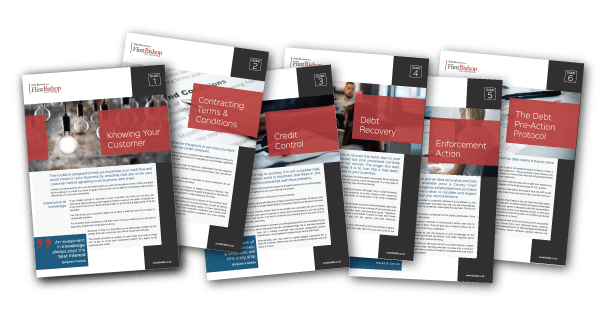The new Pre-Action Protocol for debt recovery
This year has seen many changes in the collection of debt. Firstly, taking into account the increase in Court fees, followed then by the increase in the bankruptcy threshold – it’s fair to say that this year has been relatively debtor centric. Just when we thought that we may escape 2015 without any further bad news it seems that the pre-action protocol for debt recovery is just around the corner.
Currently in its second consultation period, if implemented, the Protocol is set to put further hurdles in the way of an already difficult task for credit managers and credit controllers. Click here to visit the consultation.
This is the second time that the proposal has been put forward, with the Civil Procedure Rules Committee putting the initial idea forward in 2014. This was far more onerous than the new one but, it does read as though it has not been written by someone on the coal face of debt collection.
The Protocol applies to any business (including sole traders and public bodies) claiming payment of a debt from an individual (including a sole trader) and describes the conduct that the Court would normally expect before Court proceedings are issued. It includes a template Information Sheet and Reply Form to be provided to debtors in “all cases”.
The apparent assumptions
It seems as though the Protocol has been put together on the basis that debtors are simply lacking in information, rather than lacking in willingness to pay.
No amount of information or paperwork is going to change that. In a lot of cases, the debtor will simply let the Court process happen around them until they are forced to pay. This is not because the debt is disputed, but because that is how debtors always have been, and how they still are. This can include businesses, sole traders and individuals.
In genuine cases, where the debtor does want to pay (albeit may have cash-flow issues) or honestly believes that they have a genuine dispute, they will respond to the first letter sent to them, and the issues can be addressed. However, the Protocol appears to assume that the debtor will not recall the circumstances in which the debt arose.
How likely is it that the debtor has forgotten that they entered into a contract to purchase goods that they have received and are using on a daily basis? Did they forget where their 20 desks came from? Do they think that access to legal publications and software is by luck? Have they forgotten that they placed their elderly relative in a private care home? Are they aware they are using the telephone and the internet? In 90% of cases the debtor knows why the money is owed, how much and to whom, and they are just waiting to see if they will be chased for it.
The Protocol also appears to assume that creditors have endless patience and a never ending supply of paper and stationery, which they receive free of charge and can, therefore, send 3-page letters with various copy documents and templates attached.
This assumption is wrong – creditors don’t have time to be printing copy contracts, statements, invoices, templates, helpful reply sheets and 3-page letters (just to be ignored) – each business just wants to recover the money which is rightfully owed to them and is already substantially overdue by this stage.
What may be required if this is implemented?
We all accept that a letter of claim should be sent pre action. A good letter of claim will be correctly addressed and will properly identify the creditor, the amount due, the reason that the debt is due, the current balance and other relevant information such as contract numbers, dates and details of what the debt relates to. It should also specify who the debtor should respond to, and who they can contact for free legal advice or debt advice if they need assistance. It is supposed to give the debtor sufficient information to identify and understand the debt and to make payment easily, or make contact for further information.
However, the proposals go much further and state that a letter of claim should contain the following information:
(i) the amount of the debt;
(ii) whether interest is continuing;
(iii) where the debt arises from an oral agreement, who made the agreement, what was agreed (including, as far as possible, what words were used) and when and where it was agreed
(iv) where the debt has been assigned, the details of the original debt and creditor, when it was assigned and to whom;
(v) if regular instalments are currently being offered by or on behalf of the debtor, or are being paid, an explanation of why a court claim is being considered;
(vi) details of how the debt can be paid (for example, the method of and address for payment) and details of how to proceed if the debtor wishes to discuss payment options; and
(vii) the address to which the completed Reply Form should be sent;
and that it should also do one of the following:-
(i) enclose an up-to-date statement of account for the debt;
(ii) enclose the most recent statement of account for the debt and state in the Letter of Claim the amount of interest incurred and any administrative or other charges imposed since that statement of account was issued, sufficient to bring it up to date; or
(iii) where no statements have been provided for the debt, state in the Letter of Claim the amount of interest incurred and any administrative or other charges imposed since the debt was incurred;
and
(a) where the debt arises out of a written agreement, enclose a copy of that agreement, unless providing the agreement is disproportionately burdensome to the creditor;
(b) enclose a copy of the Information Sheet and the Reply Form at Annex 1 to the Protocol; and
(c) enclose a Statement of Means form (an example Statement of Means is provided in Annex 2 to the Protocol).
and the final point…..
“If the debtor does not reply to the Letter of Claim within 30 days, the creditor may start Court proceedings, subject to any remaining obligations that the creditor may have to the debtor (for example, under the Financial Conduct Authority’s Handbook). Account should be taken of the possibility that a reply was posted towards the end of the 30-day period.”
On any analysis, 30 days is too long to wait for a response. A debtor should not need 30 days to decide if there is a dispute when the debt will already be well overdue.
Where the debtor has responded to the LBA, the rest of the Protocol should fall into place and is relatively reasonable, however for those pursuing small debts in bulk against individuals or sole traders, the requirements above are burdensome, as is figuring out whether the Protocol applies.
What can creditors do in readiness?
Knowing your customer will now be more important than ever, as the difference between dealing with a sole trader or a firm, will mean the difference between the Protocol applying or not. It may be easier to take the view that the Protocol applies in all circumstances (save for limited companies and PLCs) and at least try to follow the spirit of it. Read our guide on knowing your customer here for further guidance on this subject.
Accurate record keeping, document storage and filing will be key, as will be the ability to retrieve copy documents, contracts, invoices and purchase orders with ease. Any delay in providing this information, or not having the information available, could lead to a breach of the Protocol and disapproval or sanction by the Court.
Creditors will need to know with certainty what rates of interest they can apply to the debt, what administration or default charges they can claim, and over what period these can be claimed. Read our guide on terms and conditions here for further guidance on this subject.
Outsourcing debt collection work may become more prevalent for larger companies, to shift the burden and cost from their own staff onto a third party supplier who will act on a fixed cost basis and share risk. However it will be important to ensure that the supplier is fully familiar with the requirements of the Protocol and will not cause a breach, as well as have a detailed understanding of the business and industry.
What will creditors do in practice?
In reality, the sanctions are only ever going to be considered if a creditor issues a genuinely disputed claim without complying with the Protocol – for example, if a debtor disputes the invoice upon receiving the first letter, but the creditor carries on ignoring requests for information and refuses to supply documents or clarify calculations. Any professional credit control department should not operate in this manner anyway, although you should check that your external debt collectors are not operating in this lazy, shoddy manner; unfortunately some still do.
Creditors may decide to take the approach of only applying the Protocol to debts over a certain value, or where there is likely to be an issue. Where the debt is a lower value debt which is almost certain to be ignored, the creditor can probably quite comfortably send a clear and concise letter before action, wait a reasonable time (i.e 7-14 days) and then issue Court proceedings safe in the knowledge that the debtor will ignore the Court claim just as they have everything else, Judgment in default will be obtained and compliance with the Protocol (or not) is unlikely to be considered. This will of course be a risk, but it will need to be weighed up against commercial reality.
Conclusion
If implemented, the Protocol – even in its now simplified form – has the power to cause all sorts of problems for the industry. Debt collection needs to be done quickly and at low cost, however these proposals just serve to give the professional debtor more chance to delay matters. Just as subject access requests became the topic of conversation a few years ago, the new stalling process is likely to be the request of a fully Protocol compliant letter of claim, which even if sent, is likely to have little impact and cause further delays.
All credit managers will agree that we need protocols. After all, they have been around for many years, and for complex cases, they do serve a useful purpose. For debt recovery, for any debt, the scope here is too wide and the Protocol is unnecessary.
It is not yet clear if or when this Protocol will come into force, or what format it will take, however consultation is still open and with strong responses from those with an opinion, we can only hope that it will be simplified yet further to balance the interests of both parties to an extent where cost effective debt recovery will still be a reality in future business.
We can help design a process for recovering your debts in a cost effective way, having regard to relevant rules and protocols. These rule changes mean that is now more important than ever to get your pre-action policies correct for your business, which is something that we are proud to have helped many businesses with their realisation of debts – visit this link to read our case studies.
For more information, please contact us on 01332 226 474 or email: .
|
|


